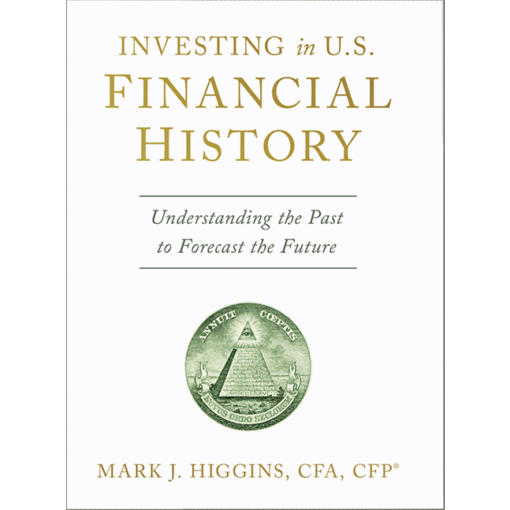[ad_1]
On February 27, 2024, Investing in U.S. Financial History was published, capping off my exhaustive four-year effort to document the financial history of the United States. The book begins with Alexander Hamilton’s brilliant financial programs in 1790 and ends with post-COVID-19 inflation in 2023. Now that the book promotion process is winding down, I am returning to my second passion, which is serving as an advisor to institutional investment plan trustees.
This blog post draws from several chapters of my book, as well as on my more than 12 years’ experience as an investment consultant. It is framed around five quotes that relate to the fulfillment of a trustee’s fiduciary duties.
If you serve as a trustee of an institutional investment plan, these quotes may help guide your decisions for the benefit of those who depend on your stewardship.
Quote 1: “A trustee may only incur costs that are appropriate and reasonable in relation to the assets, the purpose of the trust, and the skills of the trustee…Wasting beneficiaries’ money is imprudent.” — Uniform Prudent Investor Act (1994)
A trustee’s scarcest asset is rarely found in the portfolios they oversee. In fact, their scarcest asset is their time. Trustees typically convene quarterly for a few hours, which forces them to depend heavily on advice provided by investment consultants, professional staff, and asset managers. Over the past several decades, these advisors have encouraged trustees to add actively managed funds and expensive alternative asset classes.
The Uniform Prudent Investor Act (UPIA) requires fiduciaries to evaluate whether these incrementally higher costs are worth it, but few pause to consider their obligation to make such determinations. Perhaps, reciting this quote before every decision — especially those that result in substantially higher fees — may serve as an inexpensive but powerful hedge against unintentional financial waste.
Quote 2: “More often (alas), the conclusions can only be justified by assuming that the laws of arithmetic have been suspended for the convenience of those who choose to pursue careers in active management.” — Nobel Laureate William Sharpe (1991)
Investment consultants and investment staff frequently recommend heavy use of active managers without considering the preponderance of evidence demonstrating that active management is highly unlikely to add value. Skeptics of this approach need only review the exceptional performance of the Nevada Public Employees’ Retirement System (PERS) to validate their concerns.
Employing only two staff members and allocating roughly 85% of the portfolio to index funds, Nevada PERS boasts 10-, 15-, and 20-year returns that exceed roughly 90% of public pension plans with more than $1 billion in assets. When presented with these exceptional results, consultants and staff may deny the reality of the fundamental mathematical principles underpinning them or argue that they are exceptions to the rule.
Trustees, in turn, often accept such explanations at face value even though the arguments are rarely backed by credible track records. This being the case, as a rule of thumb, if consultants or staff fail to demonstrate convincingly why they are uniquely capable of choosing the best fund managers repeatedly and sustainably for decades to come, the most prudent action is to assume that they are not.
Quote 3: “You don’t want to be average; it’s not worth it, does nothing. In fact, it’s less than the market. The question is ‘How do you get to first quartile?’ If you can’t, it doesn’t matter what the optimizer says about asset allocation.” — Allan S. Bufferd, former treasurer Massachusetts Institute of Technology (2008)
In 2000, David Swensen, the former CIO of the Yale Investments Office, published Pioneering Portfolio Management. The book detailed many techniques that he employed to produce returns that far exceeded those of his peers.
The key to Yale’s success was the presence of an extremely talented CIO, stable and prudent governance, and a unique learning culture that enabled team members to replicate Swensen’s talents. The critical importance of these oft overlooked capabilities is covered in a subsection of Investing in U.S. Financial History entitled “Pioneering People Management.”
Relying on this rare ecosystem, Yale repeatedly chose the best fund managers — especially in alternative asset classes like venture capital, buyout funds, and absolute return funds. After reading Pioneering Portfolio Management, rather than concluding that Yale’s ecosystem was exceptionally rare and difficult to replicate, investment staff, consultants, and OCIOs mistakenly assumed that mere access to alternative asset classes was a reliable ticket to Yale-like returns.
The problem with that assumption is that even 15 years ago it was well established that Yale’s returns depended on consistent and sustainable selection of top-quartile fund managers. Without a Yale-like ecosystem in place, accomplishing this feat in the dangerous and expensive realm of alternative asset classes is highly unlikely, and failure to generate top-quartile returns is a recipe for mediocrity or worse.
Therefore, before establishing or continuing to allocate to alternative asset classes, trustees should ask whether they and/or their advisors possess Yale’s capabilities. An honest answer in almost all cases is, “No.”
Quote 4: “You either have the passive strategy that wins the majority of the time, or you have this very active strategy that beats the market…For almost all institutions and individuals, the simple approach is best.” – David Swensen, former CIO of Yale Investments Office (2012)
Nobody understood the difficulty of outperforming ruthlessly efficient markets and dangerously opaque alternative asset classes better than Swensen himself. This is why he concluded that nearly all institutional and individual investors would produce better long-term outcomes by investing entirely in low-cost index funds.
Sadly, the main reason this message never reaches boardrooms and investment committee meetings is because the people who advise trustees almost always suffer from a deep-seated fear that it will result in their own obsolescence. One of the greatest tragedies is that the opposite is true.
Once advisors rid themselves of the hope and dream that they are among a tiny subset of investment professionals who can outwit the ruthless efficiency of markets, they can refocus trustees’ scarce time on addressing real financial challenges that are often neglected.
Quote 5: “Nothing so undermines your financial judgement as the sight of your neighbor getting rich.” —J. Pierpont Morgan, financier
Trustees often hesitate to change their portfolio in a way that makes them appear substantially different from their peers. Even those who subscribe to the belief that low-cost index funds are the most prudent approach often succumb to the fear of underperforming peers in the short-term.
It is a great irony of financial history that trustees often view heavy allocations to low-cost index funds as a riskier proposition when, in fact, it is quite the opposite. At the root of this misconception is an age-old axiom expressed by the great financier of the Gilded Age, J. Pierpont Morgan. Overcoming the instinctual envy that comes from witnessing neighbors getting richer is an emotional obstacle that trustees must surmount if they wish to become prudent stewards of capital.
I hope these quotes help guide future decisions of trustees in whose hands taxpayers and beneficiaries place their faith. Internalizing these principles requires no financial expense and little investment of a trustee’s scarcest asset — their time. Yet by applying them confidently and repeatedly, trustees can reduce costs, minimize unnecessary portfolio complexity, and reallocate their time to resolving previously neglected financial challenges. In so doing, they can travel further along the path toward fulfilling their fiduciary duty.

[ad_2]
Source link






 Bitcoin
Bitcoin  Tether
Tether  XRP
XRP  USDC
USDC  Lido Staked Ether
Lido Staked Ether  Dogecoin
Dogecoin  LEO Token
LEO Token